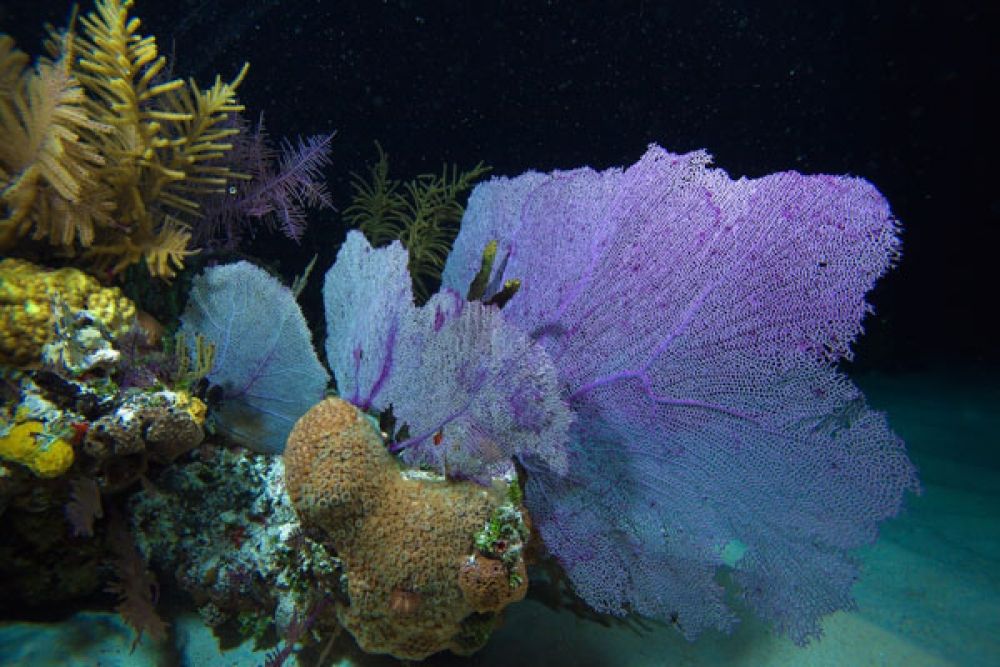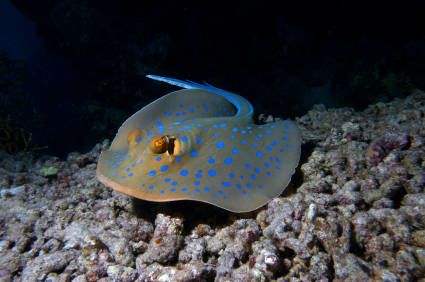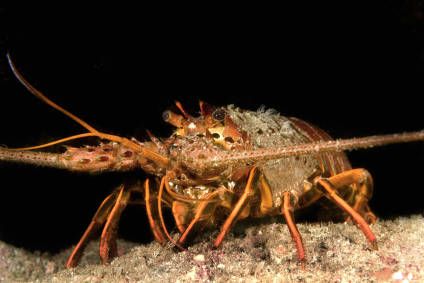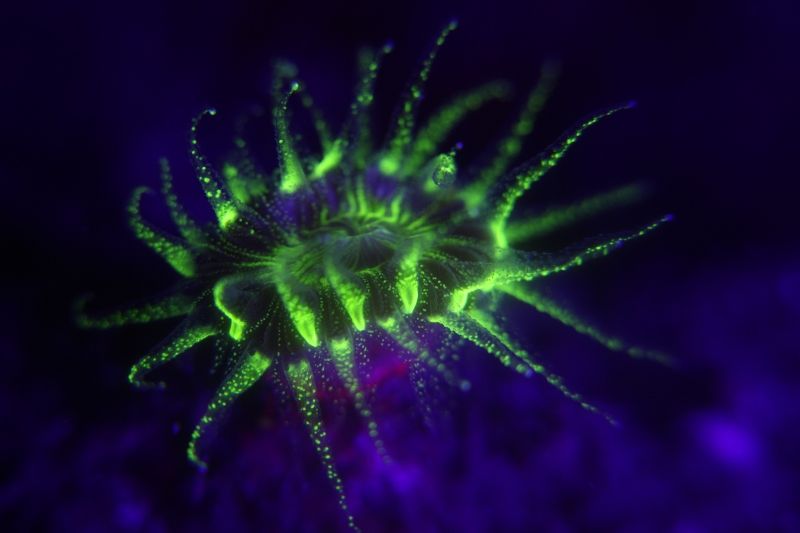Scuba diving is a satisfying sport that transports us into an alluring and picturesque marine world at any time of the day or night. However, there are certainly visible differences between diving in the daylight vs. diving at night. While you may think that darkness signifies a time of rest, most dive sites are buzzing with activity in the evening hours.
Night diving requires careful planning and precision. Descend with care and know your limitations. One of the most important items to accompany you should be your primary dive light. It is always preferable to have a secondary light in case the primary light fails. Make sure to stick with your buddy and attach glow sticks to your tanks so you are visible to the group. Test that your dive light is bright enough to illuminate the reef and assist you at deeper depths although night dives tend to be shorter and in shallower waters. It is best to go to a site that you are familiar with to put you more at ease with the skill of navigation.
Don’t just concentrate on the area within a few feet of you. Shine your light out even further in all directions and you just might catch a quick glimpse of a stingray, grouper or maybe even a curious turtle or two. Within a twinkle, you may even witness magical phosphorescent plankton that sparkles as you move your arm throughout the water causing a slight ripple.
Some of the most colossal lobsters that you will ever see make their way out of hiding in the darkness of the deep and can be a thrill to watch. Another creature that is almost always a rare sight during the day but tends to be comfortable at night is the octopus that swims along without a care in the world. Their graceful movement can be absolutely mesmerizing to the human eye.
During the day, corals are an attractive sight but nothing can compare to their nighttime beauty and vivid color. As they absorb nutrients from the surrounding waters, they begin to bloom with a ferocity and a glory that is gratifying beyond belief. Fish and coral definitely take on a more colorful appearance at night as well. Hunger gets the best of sea urchins and it isn’t uncommon to see them feeding with a fury. To predatory fish, nighttime means dinner time and hunters such as barracuda and sharks may borrow the brightness of your dive light to make it easier on them to choose from a smorgasbord of dinner courses.
Pay attention and some of the smaller marine creatures will keep you occupied. Squid are inquisitive little organisms that tend to change colors just for you. The cute cuttlefish can provide endless fascination although they tend to enjoy the twilight hour the best.
Tube anemones can sometimes be the highlight of the evening dive. In contrast to daylight when they choose to hide, the darkness brings them out and they unwind their long arms to feed. They have a tubelike body with varying lengths of tentacles and can easily be spotted. It is a wonderful sight to behold.
Night diving just might become your favorite and most relaxing way to experience the sport. Whether by sunlight or by the moon, each holds its own special qualities.
There are a few more items to remember when taking the plunge by the light of the moon. Make sure you descend feet first and look carefully below to make sure that you don’t land on precious coral. Move slowly through the water, be considerate and make sure that your light does not shine in other divers’ eyes as well as in the eyes of the fish. Most importantly, if you have any hesitation about taking the plunge, it would be best to take the night diver course offered through PADI before going on the adventure.
Night diving lets you experience diving in a ‘whole other light’.





